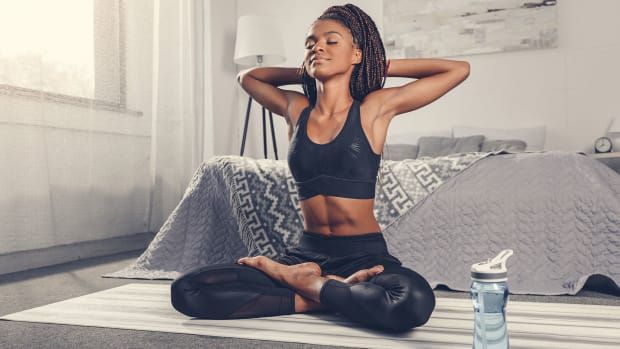Pelvic Floor Yoga Exercises: Strengthen and Relax Your Core

Incorporating pelvic floor yoga exercises into your fitness routine can lead to significant improvements in both physical and mental well-being. The pelvic floor is a group of muscles situated at the base of the pelvis that supports vital organs and plays a crucial role in core stability. Engaging and strengthening these muscles can help prevent and manage various conditions, including incontinence, back pain, and pelvic organ prolapse.
In this article, we will guide you through a series of effective pelvic floor yoga exercises that will not only strengthen but also relax your core. These exercises can be practiced by individuals of all ages and fitness levels, and they offer a wide range of benefits that extend beyond the physical realm.
Tabletop Position
Begin by assuming a tabletop position on your hands and knees. Align your wrists under your shoulders and your knees under your hips. Keep your back flat and your gaze directed towards the floor. Take deep breaths, engaging your core and pelvic floor muscles as you exhale. Hold this position for 1-2 minutes, focusing on maintaining stability and balance.

Curl & Round with Toes
From the tabletop position, curl your toes under, and lift your hips towards the ceiling, transitioning into a downward-facing dog pose. As you do this, round your back and draw your belly button towards your spine. Hold for a few breaths, feeling the stretch in your hamstrings and the activation of your pelvic floor. Slowly return to the tabletop position and repeat the movement 8-10 times.

Cobbler’s Pose
Sit on the floor with your spine straight and your legs extended in front of you. Bend your knees and bring the soles of your feet together, allowing your knees to fall to the sides. Hold your feet with your hands and gently press your knees towards the floor. This pose helps open up the hips and stretches the inner thighs while engaging the pelvic floor muscles.

Ankle Stretch
Kneel on the floor with your toes tucked under and your heels pointing upwards. Slowly sit back on your heels, feeling the stretch in your ankles and the front of your feet. Maintain an upright posture, and as you exhale, engage your pelvic floor muscles. Hold for 30 seconds to a minute and release. This exercise helps increase flexibility in the ankles and activates the pelvic floor muscles.

Table Top Stretch
Return to the tabletop position with your wrists under your shoulders and your knees under your hips. Extend your right arm straight ahead and your left leg straight back, parallel to the floor. Engage your core and pelvic floor to maintain balance. Hold for a few breaths, then switch to the opposite arm and leg. Repeat 8-10 times on each side.

Frog Pose
Lie on your stomach with your forearms on the ground, elbows under your shoulders. Spread your legs wider than hip-width apart, with your toes pointing outward. Press your hips into the floor while engaging your pelvic floor muscles. This pose helps stretch and strengthen the inner thighs and pelvic floor.


Squats
Stand with your feet shoulder-width apart and your toes slightly turned out. Lower your body into a squat position by bending your knees and pushing your hips back. Keep your chest lifted and your core engaged. As you rise back up, contract your pelvic floor muscles. Repeat 12-15 times, maintaining proper form throughout.

Relaxing the Feet
Sit or lie down in a comfortable position. Close your eyes and focus on your breath. Bring your awareness to your feet and consciously relax all the muscles in your feet, including the toes. This relaxation technique indirectly relieves tension in the pelvic floor, promoting overall relaxation and well-being.

Conclusion
Incorporating pelvic floor yoga exercises into your daily routine can have a profound impact on your physical and mental health. These exercises not only strengthen the core and pelvic floor muscles but also promote relaxation and mindfulness. By practicing these exercises regularly, you can improve your posture, reduce the risk of pelvic floor disorders, and enhance your overall quality of life.
Save Pin

